第42章
I said just now, that happy was the sportsman who was also a naturalist. And, having once mentioned these curious water-flies, I cannot help going a little farther, and saying, that lucky is thefishermanwho is also a naturalist. A fair scientific knowledge of the flies which he imitates, and of their habits, would often ensure him sport, while other men are going home with empty creels. One would have fancied this a self-evident fact; yet I have never found any sound knowledge of the natural water-flies which haunt a given stream, except among cunning old fishermen of the lower class, who get their living by the gentle art, and bring to indoors baskets of trout killed on flies, which look as if they had been tied with a pair of tongs, so rough and ungainly are they; but which, nevertheless, kill, simply because they are (in COLOUR, which is all that fish really care for) exact likenesses of some obscure local species, which happen to be on the water at the time. Among gentlemen-fishermen, on the other hand, so deep is the ignorance of the natural fly, that I have known good sportsmen still under the delusion that the great green May-fly comes out of a caddis- bait; the gentlemen having never seen, much less fished with, that most deadly bait the "Water-cricket," or free creeping larva of the May-fly, which may be found in May under the river- banks. The consequence of this ignorance is that they depend for good patterns of flies on mere chance and experiment; and that the shop patterns, originally excellent, deteriorate continually, till little or no likeness to their living prototype remains, being tied by town girls, who have no more understanding of what the feathers and mohair in their hands represent than they have of what the National Debt represents. Hence follows many a failure at the stream-side; because the "Caperer," or "Dun," or "Yellow Sally," which is produced from the fly-book, though, possibly, like the brood which came out three years since on some stream a hundred miles away, is quite unlike the brood which is out to-day on one's own river. For not only do most of these flies vary in colour in different soils and climates, but many of them change their hue during life; the Ephemerae, especially, have a habit of throwing off the whole of their skins (even, marvellously enough, to the skin of the eyes and wings, and the delicate "whisks" at their tail), and appearing in an utterly new garb after ten minutes' rest, to the discomfiture of the astonished angler.
The natural history of these flies, I understand from Mr. Stainton(one of our most distinguished entomologists), has not yet been worked out, at least for England.The only attempt, I believe, in that direction is one made by a charming book, "The Fly-fisher's Entomology," which should be in every good angler's library; but why should not a few fishermen combine to work out the subject for themselves, and study for the interests both of science and their own sport, "The Wonders of the Bank?" The work, petty as it may seem, is much too great for one man, so prodigal is Nature of her forms, in the stream as in the ocean; but what if a correspondence were opened between a few fishermen - of whom one should live, say, by the Hampshire or Berkshire chalk streams; another on the slates and granites of Devon; another on the limestones of Yorkshire or Derbyshire; another among the yet earlier slates of Snowdonia, or some mountain part of Wales; and more than one among the hills of the Border and the lakes of the Highlands? Each would find (I suspect), on comparing his insects with those of the others, that he was exploring a little peculiar world of his own, and that with the exception of a certain number of typical forms, the flies of his county were unknown a hundred miles away, or, at least, appeared there under great differences of size and colour; and each, if he would take the trouble to collect the caddises and water-crickets, and breed them into the perfect fly in an aquarium, would see marvels in their transformations, their instincts, their anatomy, quite as great (though not, perhaps, as showy and startling) as I have been trying to point out on the sea-shore. Moreover, each and every one of the party, I will warrant, will find his fellow-correspondents (perhaps previously unknown to him) men worth knowing; not, it may be, of the meditative and half- saintly type of dear old Izaak Walton (who, after all, was no fly- fisher, but a sedentary "popjoy" guilty of float and worm), but rather, like his fly- fishing disciple Cotton, good fellows and men of the world, and, perhaps, something better over and above.
The suggestion has been made.Will it ever be taken up, and a "Naiad Club" formed, for the combination of sport and science?
And, now, how can this desultory little treatise end more usefully than in recommending a few books on Natural History, fit for theuse ofyoung people; and fit to serve as introductions to such deeper and larger works as Yarrell's "Birds and Fishes," Bell's "Quadrupeds" and "Crustacea," Forbes and Hanley's "Mollusca," Owen's "Fossil Mammals and Birds," and a host of other admirable works? Not that this list will contain all the best; but simply the best of which the writer knows; let, therefore, none feel aggrieved, if, as it may chance, opening these pages, they find their books omitted.